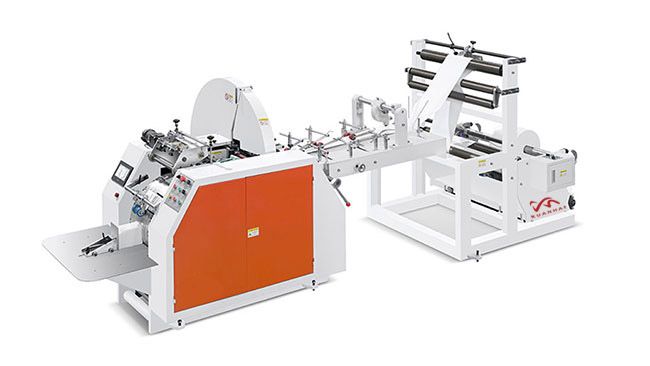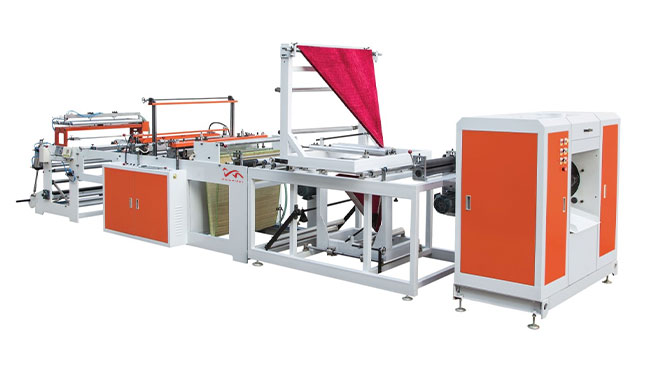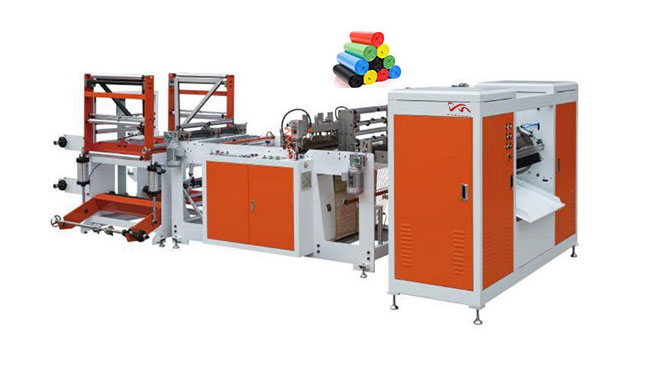In the world of packaging, paper bag making machines play a vital role in the efficient production of bags that we use in every aspect of our daily lives, from shopping to carrying groceries. These machines consist of a mix of mechanical and sometimes automated components that work together to transform a simple roll of paper into a practical bag. A paper bag making machine typically works through the following series of processes:
Paper Feeding: The Starting Point
The journey of paper bag production begins with the paper feeding mechanism. A large roll of paper, often made of kraft paper or other suitable paper materials, is loaded onto the machine. This roll is carefully mounted on a spindle or a similar support system. As the machine starts, a set of rollers, known as feed rollers, come into action. These rollers grip the paper and pull it from the roll at a controlled speed. The speed and tension of the paper feed are meticulously adjusted. If the paper is fed too quickly, it can cause jams or misalignments further along the production process. On the other hand, if the tension is too loose, the paper may wrinkle or not move smoothly. Advanced machines use sensors to monitor the paper's position and adjust the feed rollers accordingly, ensuring a consistent and stable flow of paper into the machine.
Optional Printing: Adding Identity
For many paper bags, a printed design or message is an essential feature. This is where the printing unit of the paper bag making machine comes into play. There are several printing techniques used in these machines. Flexography is a popular choice. In flexographic printing, a relief image is created on a rubber or plastic plate. This plate is then inked, and when it comes into contact with the paper, it transfers the inked image onto the paper surface. Digital printing is also increasingly being used, especially for short - run productions or when highly detailed and customized designs are required. Digital printers can directly transfer the digital design onto the paper using inkjet or toner - based technologies. The printing process is synchronized with the paper feed, so that the design is accurately printed at the right position on the paper as it moves through the machine.
Folding: Shaping the Bag
Once the paper has been fed and, if necessary, printed, it's time for the folding process. This is where the flat sheet of paper starts to take the shape of a bag. The folding mechanism is one of the most complex parts of the paper bag making machine. There are multiple folding operations involved. First, the side panels of the bag are folded. Specialized folding plates and guides are used to bend the paper at precise angles. These folding plates are carefully designed to ensure that the folds are sharp and uniform. After the side panels are folded, the bottom of the bag is formed. This may involve folding the paper in a specific pattern, such as a square - bottom or a gusseted bottom. The folding process is often aided by belts and rollers that help to move the paper into the correct position and hold it in place during the folding. In some modern machines, computer - controlled servomotors are used to precisely control the movement of the folding components, allowing for greater flexibility in producing different bag sizes and styles.
Gluing: Holding it All Together
After the paper has been folded into the shape of a bag, glue is applied to bond the various parts together. Gluing is a critical step as it determines the strength and durability of the finished bag. Glue applicators in the paper bag making machine are designed to dispense the right amount of adhesive at the appropriate locations. There are different types of glue applicators, such as spray guns, roller - based applicators, and slot - die coaters. Spray guns are useful for applying a fine mist of glue over a large area, while roller - based applicators are better for applying a more uniform layer of glue. Slot - die coaters are often used when a very precise and consistent amount of glue is required. The glue used is typically a fast - drying adhesive that can quickly bond the paper surfaces. Once the glue is applied, pressure is applied to ensure good adhesion. This may be done using a set of pressure rollers or a pressing mechanism that presses the glued parts together for a short period.
Handle Insertion (if applicable)
For paper bags with handles, the handle insertion process is an important part of the production. Handles can be made of various materials, such as paper twine, plastic, or fabric. In automated machines, the handle insertion is a highly precise operation. First, the handles are fed into the machine from a separate supply source. Specialized grippers or clamps pick up the handles and position them at the designated locations on the bag. For example, in the case of paper - twine handles, the ends of the twine are inserted into small holes or slots in the bag's side panels. The machine then secures the handles in place, often by folding over a small tab of paper or using a drop of glue. In some cases, plastic or fabric handles are attached using stitching or heat - sealing techniques. The handle insertion process is carefully coordinated with the rest of the bag - making process to ensure that the handles are evenly spaced and firmly attached.
Cutting: Creating Individual Bags
The continuous strip of folded, glued, and handle - attached (if applicable) paper is now ready to be cut into individual bags. Cutting is a relatively straightforward but crucial step. There are two main types of cutting mechanisms used in paper bag making machines: rotary cutters and guillotine cutters. Rotary cutters consist of a circular blade or a set of blades that rotate at high speed. As the paper moves through the machine, the rotary cutter slices through the paper, creating clean and smooth cuts. This type of cutter is suitable for high - volume production as it can operate at a fast pace. Guillotine cutters, on the other hand, use a sharp, straight blade that drops down vertically to cut the paper. Guillotine cutters are often preferred when more precise cuts are required, especially for bags with specific size requirements. The cutting process is synchronized with the rest of the production line, so that each bag is cut to the correct length.
Quality Inspection: Ensuring Perfection
Before the paper bags are considered ready for use, they go through a quality inspection. This is an important step to identify any defects or imperfections in the bags. Quality inspection stations in the paper bag making machine can be either manual or automated. In manual inspection, an operator visually checks each bag for issues such as misprints, uneven folds, weak glue bonds, or incorrect handle placement. Automated inspection systems, on the other hand, use sensors and cameras to detect defects. For example, cameras can be used to check the print quality, looking for any smudges or missing parts of the design. Sensors can detect if the bag has been folded correctly or if the glue has been applied evenly. If a defective bag is detected, it is automatically removed from the production line, either by a mechanical arm or a rejection mechanism. This helps to ensure that only high - quality paper bags reach the market.
Stacking and Packaging: Preparing for Distribution
The final stage in the paper bag making process is stacking and packaging. Once the bags have passed the quality inspection, they are neatly stacked. This can be done manually or using automated stacking equipment. Automated stackers use conveyors and robotic arms to pick up the bags and stack them in a specific pattern. The stacked bags are then packaged for shipping. They may be placed in boxes, either individually or in groups, depending on the customer's requirements. Packaging materials such as cardboard boxes, plastic wrap, or shrink - wrap are used to protect the bags during transportation and storage. The packaged paper bags are now ready to be distributed to retailers, wholesalers, or other end - users, where they will be filled with various products and used by consumers.
In conclusion, a paper bag making machine is a complex and highly efficient piece of equipment. It combines multiple processes, from paper feeding to packaging, to produce paper bags that are not only functional but also aesthetically pleasing. With advancements in technology, these machines are becoming more automated, precise, and capable of producing a wider variety of bag styles, meeting the ever - changing demands of the packaging industry.
If there is any specific part of the paper bag making process you would like to explore further, perhaps a specific type of machine or technological improvement? Please contact us and we can provide more targeted information.
- Paper Food Box Making Machine
- Three-dimensional carton forming machine
- Multi grid paper lunch box forming machine
- Hamburger box making machine
- Food box making machine
- Right angle paper box making machine
- Carton Erecting Machine
- Paper cup making machine
- Paper stick making machine
- Sticker Label Making Machine
- Sticker Label printing machine
- Die cutting machine
- Label Slitting and rewinding machine
- Label Making Auxiliary equipment
- Printing Quality Checking Machine
- Plastic Container Making Machine
- Plastic cup making machine
- Plastic cup printing machine
- Plastic lid printing machine
- PVC Shrink Sleeve Making Machine
- PVC Shrink sleeve gluing machine
- PVC Shrink sleeve cutting machine
- PVC film slitting machine
- PVC film printing machine
- Disposable Products Making Machine
- Plastic glove making machine
- Medical Disposable Making Machine
- Hotel Amenities Making Machine
- Paper confetti die cutting machine
- Party products making machine







